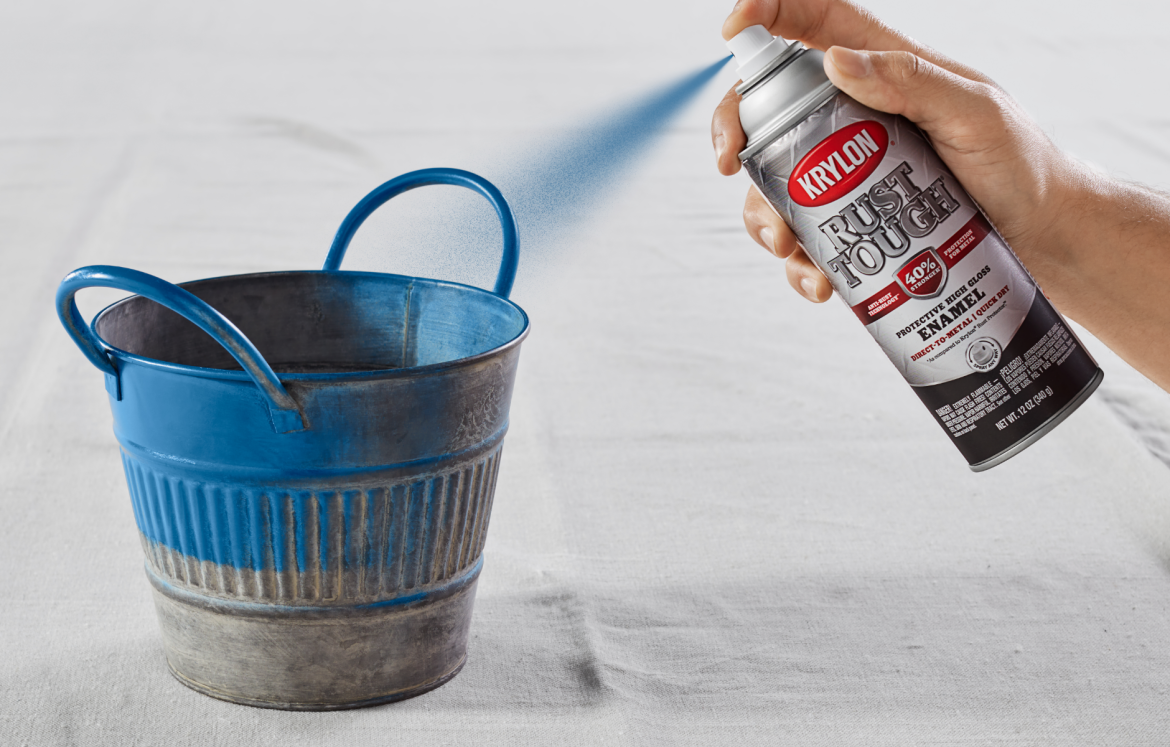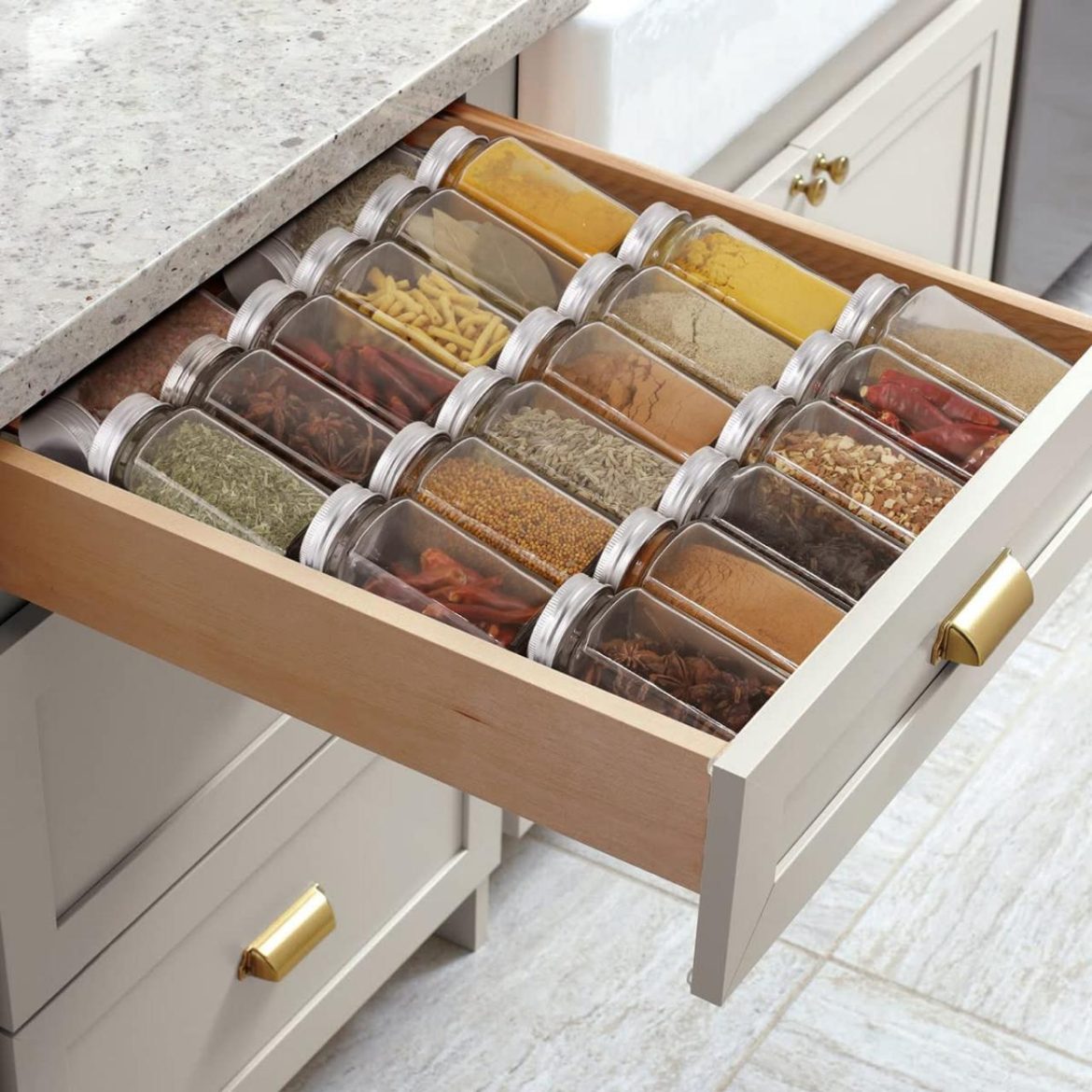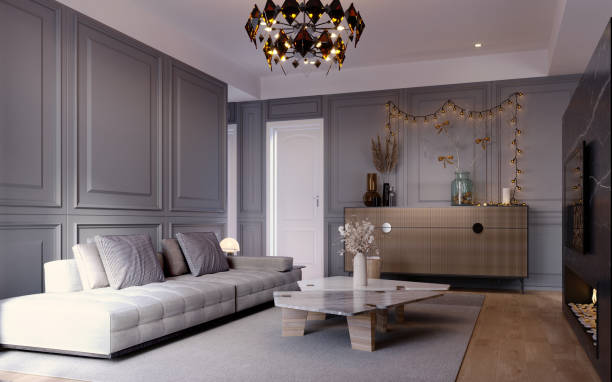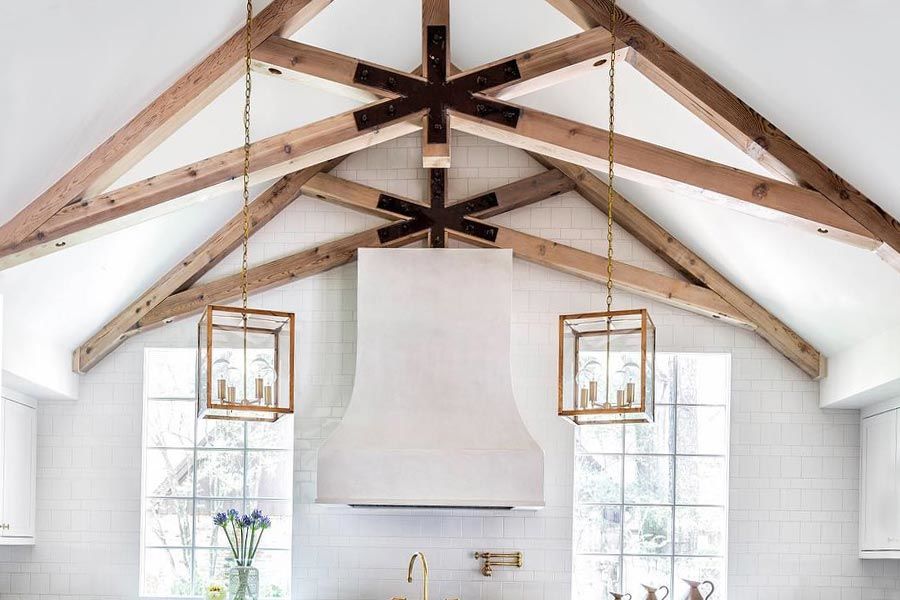Spray paint is very handy for DIY, home makeovers, and art. Krylon and Rust-Oleum are the big players in the paint industry. People love them both and often argue about which is better. They are a little different when you look closely. Things like how easy they are to use, how nice they make things look, how tough they are, colors, and price.
There are more differences between these two spray paints, and each has its features. If you’re into DIY, a pro painter, or just starting, picking Krylon or Rust-Oleum matters. In this, we’ll compare these spray paints. We’ll discuss their histories, what they offer, and when to use them. Whether you’re fixing up furniture, doing a car project, or getting artsy, we’ll help you choose.
Let’s know about the Krylon vs Rust-Oleum spray paint so you can pick the best one for your next project.
1. What is Rust-Oleum?

Rust-oleum is a type of paint. People use it for lots of things. It’s not like the paint for art. It’s unique. It’s good at going on things without being hard. Also, it keeps things safe from rust and other dust. Let’s learn more about Rust-Oleum. People use Rust-Oleum for different jobs. It’s handy for fixing up your old bike. If your fence looks bad, Rust-Oleum can help. Even your car can get a touch-up with it. It’s quite useful. You might also think, How’s Rust-Oleum different from Krylon? Well, that’s a question to think about. Some people prefer one over the other. So, next time you need to paint something, you can think about Krylon vs. Rust-Oleum.
2. Features

Flexibility
Rust-oleum is a paint that works on many things like metal, wood, and plastic. This paint is handy because you can put it on different things, and it will stick. It’s not just for one thing; it’s for many things. So, if you have something metal, or maybe wood, or even plastic, you can use some Rust-oleum and make it look better. It’s easy to use, and you don’t need to be a pro. Just follow the instructions, and you’ll be good. Also, it comes in different colors, so you can pick the one you like. Whether it’s a chair or a table, rust oleum can help it look nice again. So, next time you have something that needs a fresh look, think about Rust-oleum or Varathane Wood Stain. It’s a simple way to make things better.
Durability
This paint is really strong. It doesn’t easily break or disappear. That means whatever you paint with Rust-Oleum will stay safe for a very long time. Krylon vs Rustoleum is an important choice when picking paint. Krylon and Rustoleum are two brands of paint. Some people like Krylon, and some like Rustoleum. They both work well. You can use either one to paint things like furniture or walls. It’s like choosing between two yummy ice cream flavors. If you want something that lasts a long time, Rust-Oleum is a good pick. So, when you want to paint something and make it look nice, think about Krylon vs Rustoleum, and go with what makes you smile. Your things will thank you for it.
Varied Sizes, Colors, And Finishes
Rust-Oleum paint is available in various sizes so that you can pick the perfect one. It also comes in many different colors and finishes, such as glossy or not shiny, to make your things appear awesome. When deciding between Krylon and Rustoleum, consider your needs and what you want to achieve with your painting project. Krylon and Rust-Oleum are both good choices for various DIY tasks. They offer easy-to-use spray paints, like Krylon Spray Paint, that can help you transform your items without much effort. So, think about what you want to paint and what kind of finish you prefer, and then decide whether Krylon or Rustoleum is the better option for you. Don’t forget to follow the instructions on the can for the best results.
Moderate Drying Time
After you use Rust-Oleum, it needs some time to get dry. It’s not super fast or really slow. This means you have time to check if it looks nice. When you compare Krylon vs Rustoleum, you’ll see differences. Krylon might dry faster, but Rust-Oleum gives you a little more time. People often wonder which is better, but it really depends on what you need. If you’re in a hurry, Krylon could be better. If you want to take your time, Rust-Oleum is a good choice. It’s important to think about what you want. Do you want quick and simple, like Krylon? Or do you prefer a bit more time, like Rust-Oleum offers? So, next time you’re in the store, consider Krylon vs Rustoleum and what suits your project best.
3. What is Rust-Oleum Used For?

Rust-Oleum is a special kind of spray paint that’s really useful. You can use it to make things look good and prevent them from getting rusty. When you spray it, it makes a strong shield that stops rust, like putting on strong armor. You can use Rust-Oleum on things like bikes, fences, and tools. Also, it comes in many colors, so you can pick the one you love. If you’re specifically interested in painting bikes, there are specialized spray paints available for this purpose. They offer durability and rust protection for bicycle frames. When it comes to choosing between Krylon and Rust-Oleum, it’s important to consider your needs. Both are great for painting, but they have differences. Krylon is quick and easy, while Rust-Oleum offers extra protection. Think about what you want to paint and how much protection it needs. So, Krylon vs. Rust-Oleum, the choice is yours.
4. What is Krylon Spray Paint

Krylon spray paint is a type of paint in a can that you can use to color or protect things. It comes in many colors, so you can choose the one you like. People often use Krylon to paint things like furniture, metal, or wood. Krylon spray paint dries fast, which means it doesn’t take a long time to become dry and ready to use. It’s easy for beginners to use because you press a button, and the paint comes out. Also, using an Advanced Heat Gun alongside Krylon spray paint can be helpful for certain techniques like distressing or removing old paint. Krylon is good for small projects or when you want a quick and simple way to change the color of something.
5. Features

Krylon has many good things. It comes in lots of colors and finishes. You can find the color you like. It dries fast, so you don’t have to wait long. You can use it on many things like wood or metal.
Variety of Colors and Finishes
Krylon offers lots of colors to choose from. They have shiny and not-shiny options. This means you can select colors that make things look super bright or not so bright. When deciding between Krylon and Rustoleum, it’s important to think about the shades you want. Krylon provides a wide selection. Rustoleum also has its range, but Krylon has even more. So, if you’re looking for many color choices, Krylon might be your best bet.
Quick-Drying Formula
Krylon dries really fast. You don’t have to wait a long time. This is nice because you can finish your project fast. When you compare Krylon vs Rustoleum, Krylon dries quickly, so it’s good when you want to finish a project fast. Rustoleum, on the other hand, may take longer to dry. So, if you’re in a hurry, Krylon is a good choice. So, if you want to complete your painting job quickly, you might want to pick Krylon over Rustoleum. That’s because it’s quick.
Smooth and Even Application
Krylon vs Rustoleum are like different types of paint. Krylon is simple to use. You spray it on. It makes your things pretty. Rustoleum is another kind of paint. Some people like Krylon better. They say it goes on smoothly, which means it spreads easily. It makes your thing look good, and that’s what we want. So, if you’re thinking about Krylon vs Rustoleum, know that Krylon is easy to put on things. Just spray it, and your thing will look nice. Also, using a Drop Cloth or Plastic Sheeting is recommended to protect surfaces from paint splatter and spills during your project.
Durability and Protection
It keeps them safe and makes them stay around for a really long time. That’s important because you don’t want your things to go bad or break apart. When you compare Krylon vs Rustoleum, They both do a great job of keeping things in top shape. So, next time you’re thinking about protecting your thing, remember Krylon vs Rustoleum and pick the one that suits your needs best. It’s an easy way to keep your things safe and sound.
Sensitive to The Environment
Krylon is good for the Earth. It doesn’t harm nature. This is necessary because we want to protect our beautiful planet. Krylon cares about not causing pollution. When we use Krylon, we don’t make the Earth dirty. This helps us have clean air and water. When we talk about paint, we often hear about Krylon vs Rustoleum. People want to know which one is better for the environment. Krylon is an eco-friendly choice. So, when you choose Krylon, you’re helping the Earth stay healthy. It’s a smart decision for a clean world.
6. What is Krylon Used For?

Krylon spray paint and rust-oleum are similar. They both make things look nice and stop them from getting rusty. You can use Krylon on many pieces of furniture, like chairs and yard furniture. Krylon has lots of colors, too. So, you can choose the one that makes you smile. If you’re thinking about Krylon vs RustOleum, they’re both good for fixing up your things. So, next time you want to paint something, you can think about Krylon vs. Rust-Oleum and pick the one you like.
7. Difference Between Rustoleum and Krylon Spray Paint

When it comes to Rustoleum and Krylon spray paints, there are some key differences you should know.
Price
Rustoleum costs less money than Krylon, so if you’re looking to spend less, Rustoleum could be a smarter pick. When deciding between Rustoleum and Krylon, think about your wallet. Rustoleum tends to be easier on your finances. Both brands make sprays for various things, like painting metal or wood. They’re both good, but Rustoleum doesn’t hit your wallet as hard. So, if you’re on a tight budget, Rustoleum could be the way to go. In the debate of Krylon vs Rustoleum, your bank account might sway your decision towards Rustoleum. Just remember that it’s important to choose what suits your needs and doesn’t empty your pockets.
Colors
Both Krylon and Rustoleum have many colors. But Krylon has even more special and bright choices. If you want something unique, Krylon is a good choice. When choosing paint, it’s important to think about your project and what you want it to look like. Krylon vs Rustoleum have different paints for various things. Rustoleum is great for outdoor projects, while Krylon can be used indoors. So, before you decide, think about where you’ll use the paint. Also, remember to compare prices to get the best deal.
Drying Time
When we talk about how long it takes for Rustoleum and Krylon spray paint to dry, it’s important to know that both paints dry pretty fast. Krylon usually dries a little quicker than Rustoleum. With Krylon, you won’t have to wait too long. In about 15 to 20 minutes, your project is ready to touch or move. Rustoleum also dries reasonably fast, but it may take more than Krylon in about 25 to 30 minutes. So, if you’re in a hurry to finish your project, Krylon might be the better choice for you. However, both paints do a good job, so you can pick the one that suits your needs and timeline the best.
8. Uses of a Paint Sprayer

Paint sprayers are handy tools for various tasks, just as follows.
Furniture
A paint sprayer is a special tool for furniture. It helps make furniture look beautiful with paint. You don’t need to be an expert to use it—just point and spray. You can paint chairs, tables, and even cabinets with it. It’s super quick, so you can finish your furniture projects quickly. Also, it makes your furniture look smooth and neat. No more messy brush is needed. The paint sprayer also saves paint because it spreads it evenly. So, if you want to give your old furniture a fresh and colorful makeover, a paint sprayer is a good choice. It’s easy and fast and makes your furniture look fantastic.
Walls
If you’re painting a room, a paint sprayer can help a lot. Instead of using brushes or rollers, which can be tiring and slow, the sprayer makes things easier. You point and spray, and the paint goes on the walls quickly. Krylon vs. Rustoleum that’s a choice you might need to make when picking paint. Krylon might be easier to say than Rustoleum, but both can work well. They come in cans, and you spray the paint from them. So, if you want to paint your room fast and simple, think about using a paint sprayer.
Outdoor Projects
Sprayers are great for painting things like fences, decks, and the outside of your house. They’re great at covering big spaces quickly. This means you can get your painting done faster and easier. Now, when it comes to choosing the right paint, you might wonder about Krylon vs Rustoleum. These are two brands that make paint for different things. Krylon is like one brand of crayons, and Rustoleum is another brand of crayons. They both make paint that sticks really well and lasts a long time. So, you can pick the one that you like best for your painting project.
Cars and Bikes
Car fans use paint guns to make their vehicles and bike frames look great. Some people find which is better, Krylon or Rustoleum, when it comes to painting. Krylon and Rustoleum are brands that make spray paints, and both can give your ride a nice coat. They’re like two different flavors of ice cream, and you can choose the one you like. These paints come in cans that you can easily spray on your things. Just follow the directions on the can, and your ride will look super cool in no time. So, whether you pick Krylon or Rustoleum, you can make your wheels look awesome without much trouble.
DIY Art
People who make art can use paint sprayers. Paint sprayers help artists make pretty and colorful pictures. This makes artists very happy because they can show their ideas and feelings through their art. There are different kinds of paint sprays, like Krylon and Rustoleum. These sprays are like tools for artists. Artists use them to make their art look nice. Paint sprayers work by spraying paint on things. They are easy to use. Artists can choose many colors. This is good because it gives them lots of choices. When artists use Krylon and Rustoleum, they can make beautiful paintings. These paintings can make people feel happy when they look at them. So, paint sprayers help artists make the world more colorful and enjoyable with their art. A strong drop cloth or Painter’s Tape can be a practical accessory for any artist using a paint sprayer.
Conclusion
When you look at Krylon and Rustoleum spray paints, this is similar to comparing two different kinds of colors. Both have their good sides, but they’re not the same. Krylon is easy to use, simple, and gives you decent color. Rustoleum might take a little more effort, but the result can be really nice.
So, which one is better? Well, that depends on what you’re painting and how much time you want to spend. If you need to cover something quickly and don’t care too much about the details, go for Krylon. But if you want your project to really stand out, Rustoleum is the way to go. It might need more patience, but the finish can be amazing. So, when you’re at the store and you see these spray paints, don’t worry too much.
Just think about what you’re painting and pick the one that fits from Krylon vs Rustoleum.








































































































































